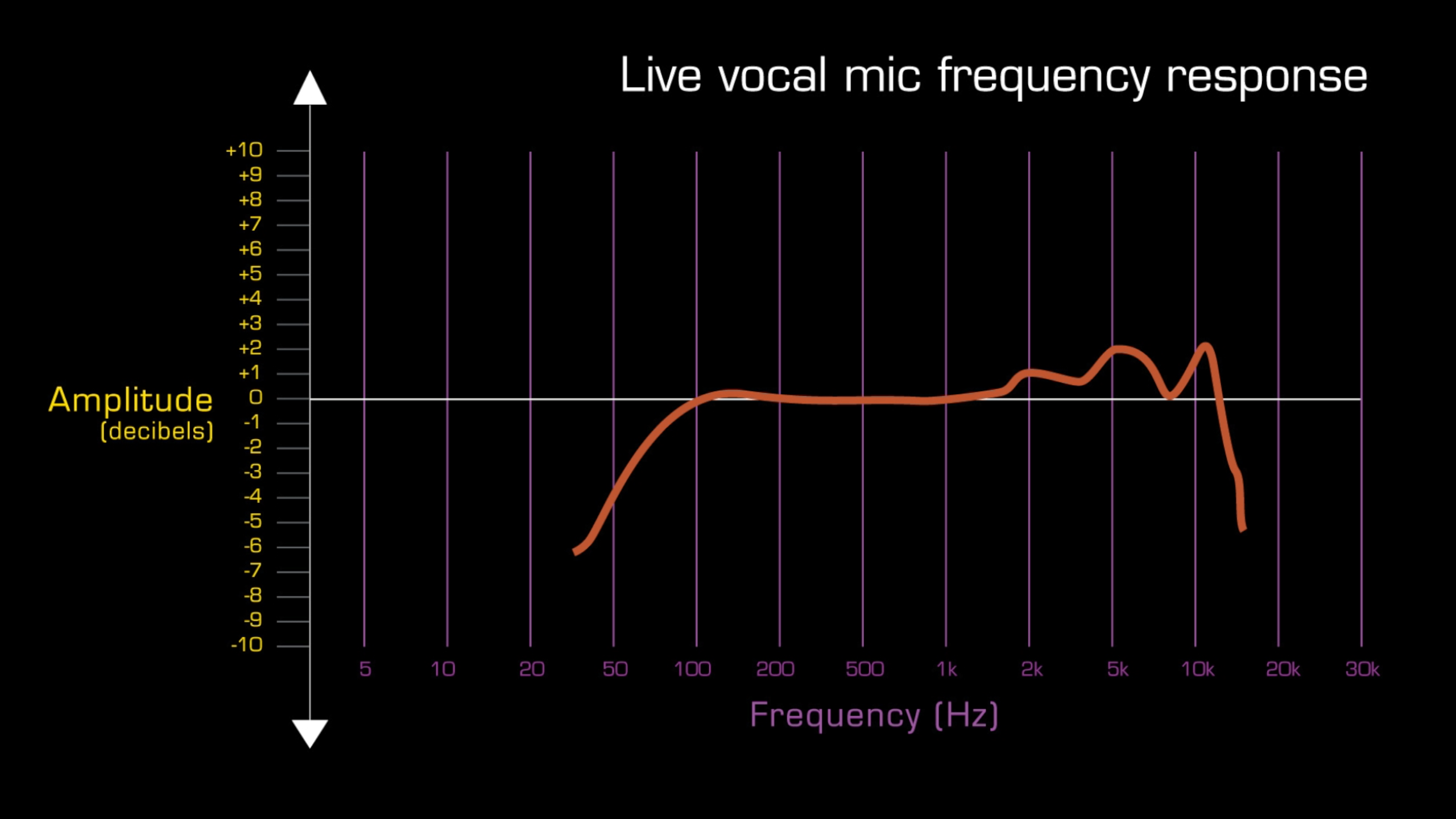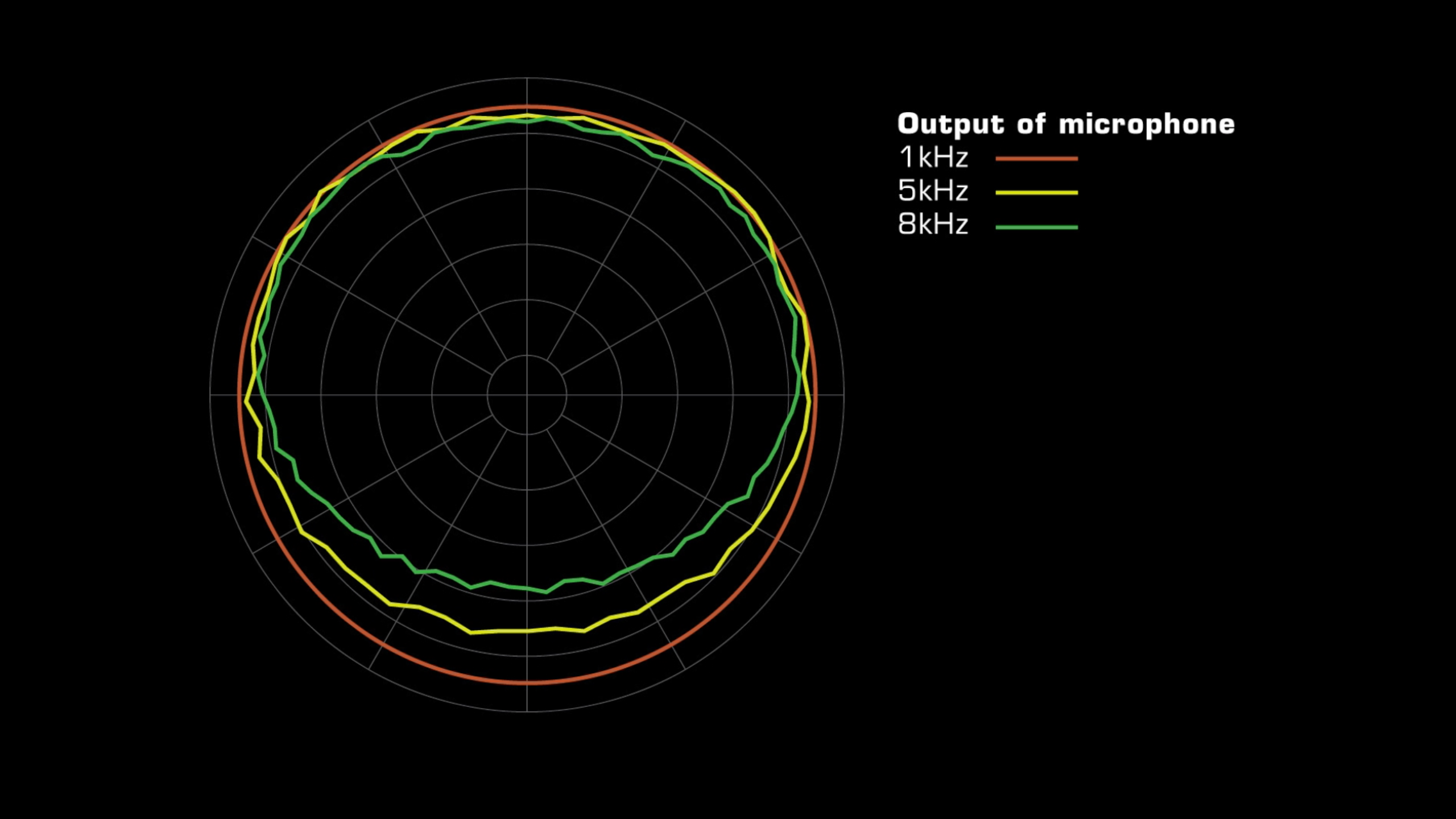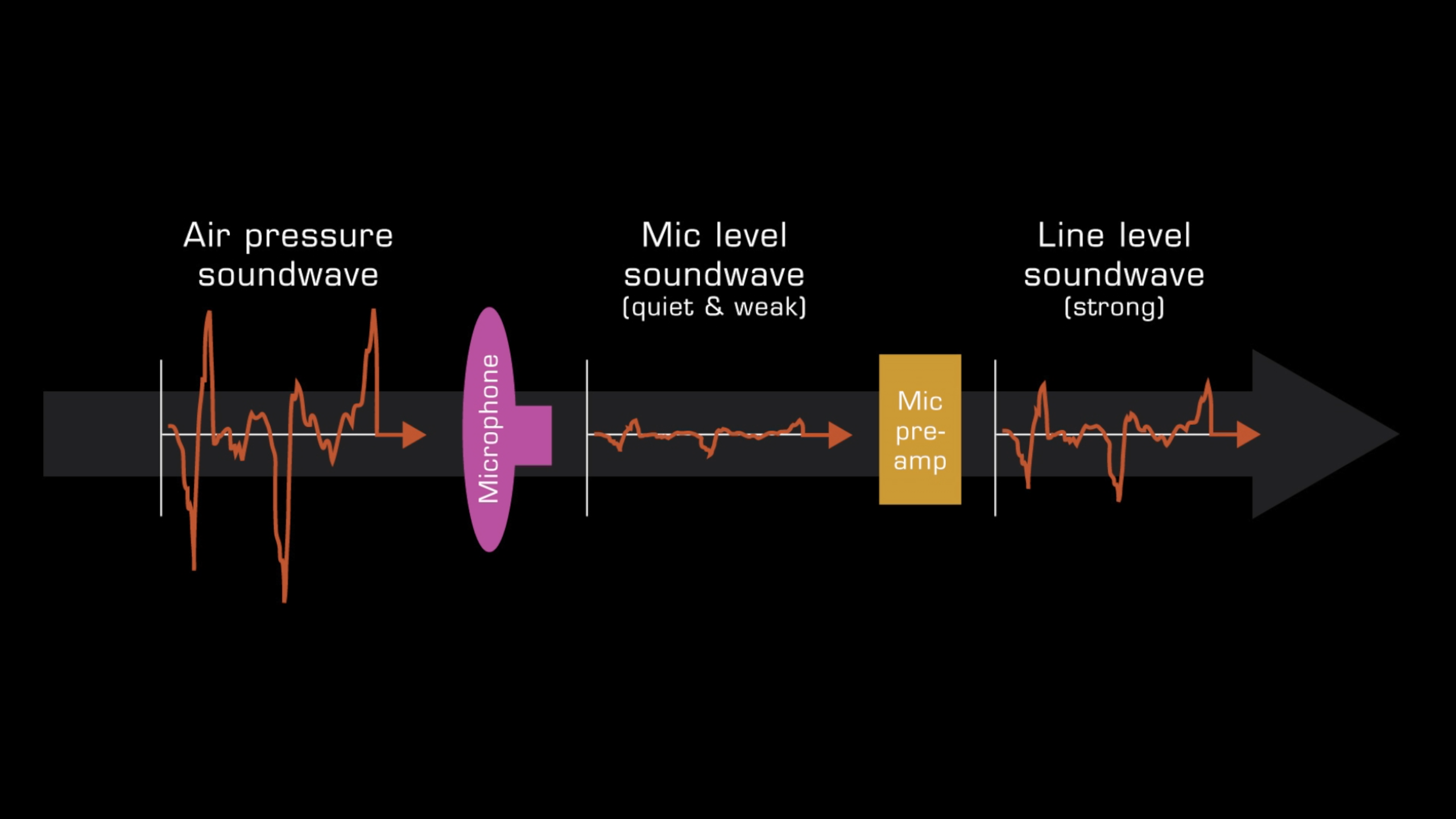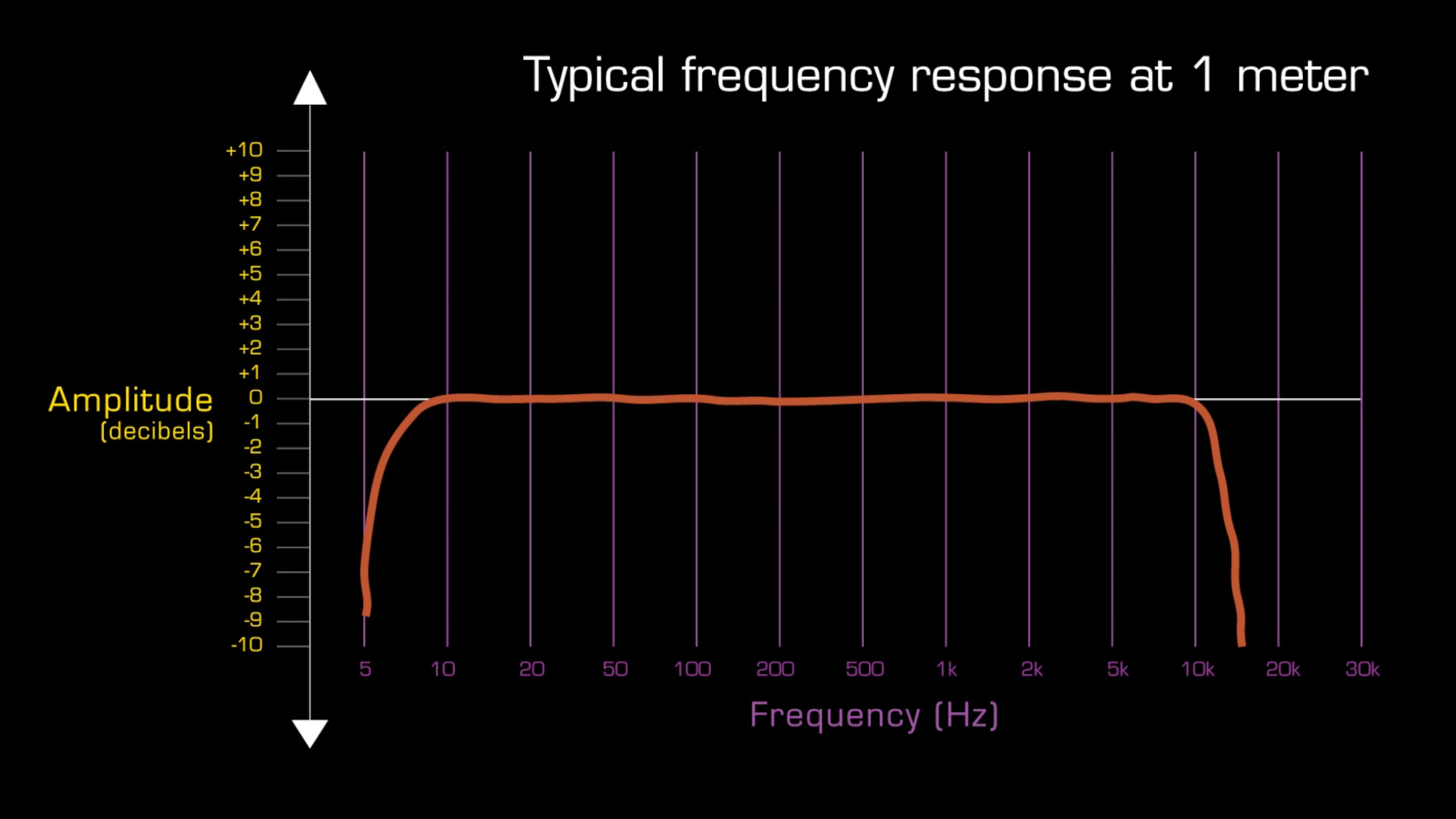Microphones 14
The five primary microphone recording factors
- Video
- Script
Welcome to this tutorial on the 5 primary microphone recording factors.
The quality and character of sound recorded with microphones depends on 5 factors. They are ..
1. Recording environment, usually a room
2. The quality of the source sound to be recorded, usually a performer or instrument
3. The choice of microphone and polar pattern
4. Microphone positioning
.. and 5. Choice of microphone pre-amplifier
There are other factors such as the quality of cables and the fold-back system, but these 5 have the most impact.
Caption - 1. Recording environment
Unless you are close mic'ing and eliminating ambience with screens and acoustic treatments, the reflected (reverb) sound in the room will be an important component of the sound being picked up by the microphones.
Many engineers like to use both close and ambient mics, and record each to a separate track. Decisions on the balance of sound can then be made during mix down. Others will know the precise sound they want from previous experience in the environment and combine and record the signals from multiple mic feeds onto a single mono or stereo track.
If you are recording choral music in a church, the acoustics of the space will be a central component of the overall sound and careful mic placement will be paramount to capture the best balance of the singers and the ambience.
Caption - 2. Quality of source sound
The best equipment carefully positioned in the best environment will not produce a good result if the performer or quality of the instrument is poor. Assuming your performer is appropriate and capable, you will need to consider the following ...
1. Instrument tuning
2. The age of reeds, skins, strings etcand ..
3. squeaks or noises from stands, jewellery, keys, shoes etc
You will want to do everything possible to ensure the performer is able to produce the sound you have chosen them for.
Caption - 3. Choice of microphone and polar pattern
There are many differing microphone models and designs available and not all will suit every performer or instrument. In all situations your choice will be limited to those at your disposal.
Every mic has its own tonal character and frequency response. These differences play a big part in determining the character of a recording.

As a general guide to character ..
- small diaphragm condenser microphones can be the most transparent
- large diaphragm condensers produce the most appealing larger than life sound
- dynamic mics excel recording loud sounds with fast transients such as drums
- tube and valve mics add harmonic warmth
- .. and .. ribbon mics produce the smoothest mid-range response
A microphone's polar pattern is also important. In general omni directional mics produce the most natural sound but as they pick up sound from 360 degrees they are only suitable for situations where a source sound is being recorded within a intentionally selected acoustical space.

Caption - 4. Choice of microphone pre-amplifier
Like an electric guitar and its amplifier, the paring of a microphone and pre-amplifier can determines how the mic behaves. A mic-pre's job is too amplify to line level the very quiet signal coming from the mic. How it completes this delicate job, and the character it can add are extremely important.

Some designs (so called "transparent") seek to amplify the sound produced by the mic with as little distortion as possible, thereby preserving the essential character of the mic.

There are also mic-pre designs which intentionally "enhance" the sound of a mic by interacting with it, and/or adding harmonic colour and warmth. Such designs are sometimes considered more important than mic choice.
However, unlike a guitar set-up, differences in pre-amplifiers can be very subtle, so don't expect to always hear significant changes in the sound of a mic. In most set-ups, the choice of mic-pre will have the least impact of the 5 factors.
Caption - 5. Microphone positioning
Positioning can have a greater impact on the sound than either choice of mic or pre-amp. For example, a mic pointed towards where the fretboard meets the body of an acoustic guitar will sound very different to the same mic pointed at the sound hole.
A good way to determine optimum positioning is to listen to the mic feed through headphones whilst experimenting with positioning.
Caption - Thanks for watching
The script for this video, with accompanying images, can be found at projectstudiohandbook.com
We suggest you subscribe at our YouTube channel, and join our mailing list at our website to receive notification of new videos, blog posts and subscriber only extras.
Thanks for watching.